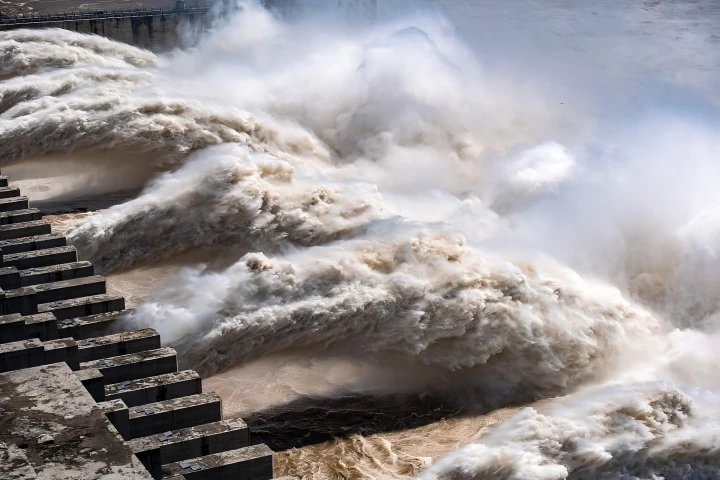The Cassini spacecrafthas captured a stunningly detailed view of the "dark eye"of Saturn's vast south polar vortex, a feature so large that it couldcomfortably swallow planet Earth. The vista is a composite shotcomprised of two separate images captured in July 2008 from adistance of roughly 392,000 km (243,578 miles)from the gas giant.
The image is roughly 10times more detailed than any previous image of the vortex, with aresolution of around 2 km (1.2 miles)per pixel. Earlier attempts to capture the eye of the polarvortex revealed a center apparently filled with transparent air and blurry cloud-like features.
In the new image, freshfeatures resolve themselves in the 8,000-km (4,971-mile)-wide storm. Convection clouds swirl within the dark expanse,formed as warmer gas rises from within the eye, subsequently coolingto form clouds nearer the surface. To the top left of the image, asub-vortex can be seen forming from interior clouds.
Saturn's storms do notoperate like their cousins back on our home planet. Earth-boundstorms draw on a liquid ocean for power, but there is no such oceanat the base of Saturn's storms. One theory holds that the colossal,permanent vortexes that mark Saturn's polar regions are driven by manysmaller short-lived storms.

The small storms drifttoward the poles over time, diverting air that is instrumental informing the vortexes. Astronomers believe that by observing the polarvortexes prevailing on distant exoplanets, that they may be able toextrapolate a gas giant's overall storm intensity.
NASA is currentlyexploring the potential of using a series of "windbots" that could be used to explore the astmophere of Jupiterand Saturn. The probes would rely on a form of in-situ resourceharvesting to maintain power and propulsion systems while ridingthe storms of a gas giant.
As Cassini enters thefinal stage of its mission, which will take the spacecraft into a polarorbit passing between the surface and the rings of Saturn, we willundoubtedly be treated to more breathtaking views of the impressivevortexes.
Source: ESA








